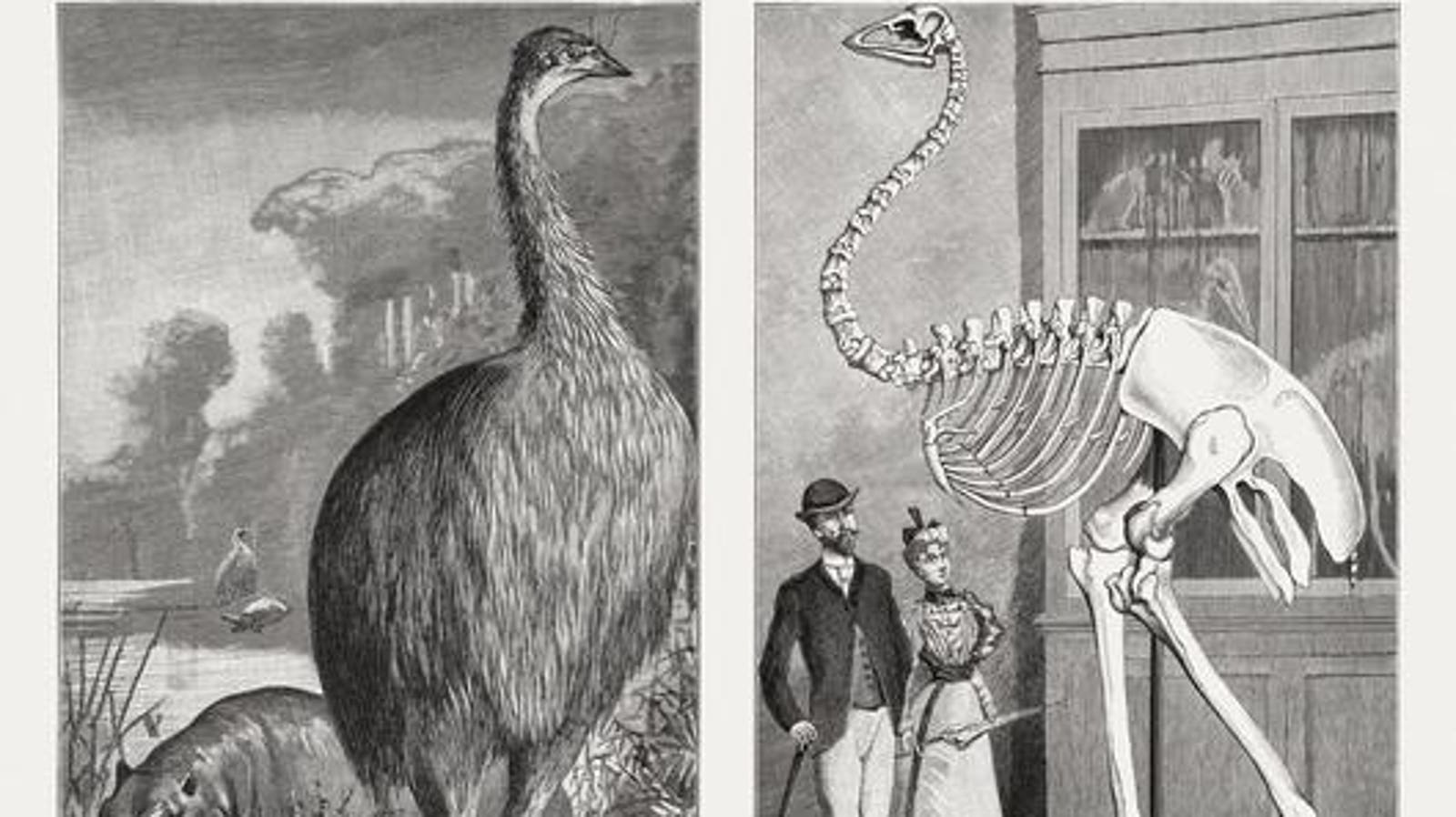Madagascar is home to some of the world’s most unique flora and fauna. And, up until about a … More
Meet Madagascar’s legendary elephant bird.
The name pretty much sums it up – this bird was a true gargantuan.
Weighing 2,000+ pounds and measuring up to 10 feet tall, a quick glance at one of these impressive animals might leave you wondering if you just saw a dinosaur.
Unlike dinosaurs, however, humans of Madagascar frequently crossed paths with elephant birds, until their extinction around 1000 A.D. Here’s the story of these flightless behemoths, from beginning to end.
Madagascar’s Giant Elephant Bird – The Heaviest Bird To Have Ever Lived
The elephant bird, or Aepyornis maximus, was a member of the ratite group — a classification that includes ostriches, emus, and kiwis.
But the elephant bird made even the ostrich – which holds the title as the world’s largest extant bird – look petite. With its massive legs and thick body, the elephant bird was built for power, not speed. It couldn’t fly, but it didn’t need to. With few natural predators on Madagascar, it ruled the island’s forests and plains for millennia.
An elephant bird — the extinct giant of Madagascar.
Fossil records show that these gargantuan birds laid gargantuan eggs. A single elephant bird egg could reach over 13 inches in length and hold about two gallons of liquid – equivalent to 150 chicken eggs. These eggs remain among the largest ever discovered and have been found intact centuries after the bird’s extinction, occasionally washing up along Madagascar’s coasts or unearthed by farmers and archaeologists.
Despite their intimidating size, elephant birds were likely herbivores, browsing on fruits, leaves, and low-lying plants. They moved slowly through the forest, using their sheer bulk to navigate through thick vegetation.
(Sidebar: While the elephant bird was the heaviest bird to ever walk the Earth, it wasn’t the tallest — see here to learn about New Zealand’s towering, wingless wonder.)
Surprisingly, scientists believe the closest living relatives of elephant birds are not ostriches or emus, but the much smaller, flightless kiwi of New Zealand — based on ancient DNA analysis. These genetic studies have also revealed that elephant birds comprised several distinct species on Madagascar, with deep evolutionary splits that justify placing them into two separate families.
The elephant bird’s disappearance coincides closely with the expansion of human settlement in Madagascar, estimated around 500 to 1000 A.D. This timeline suggests that human activity played a major role in their extinction. Although there’s little direct evidence of elephant birds being hunted to extinction, the impact of human settlement – deforestation, habitat loss, and egg harvesting – would have drastically reduced their population.
The enormous eggs, in particular, were easy targets. A single egg could feed an entire family, making them a highly attractive resource. Burning and land-clearing practices for agriculture may have further disrupted their breeding grounds and food supply.
An elephant bird egg (left) compared to a chicken egg (right). The extinct elephant bird laid the … More
The Modern Legacy Of A Lost Titan
Today, elephant birds live on only in legend, bones and the occasional egg in a museum.
They’ve also inspired fantastical tales – Marco Polo wrote of enormous birds in Madagascar capable of lifting elephants, likely a distorted memory of elephant bird lore. These stories helped fuel the myth of the Roc, a giant bird from Middle Eastern mythology.
Scientists continue to study elephant bird remains to better understand Madagascar’s prehistoric ecosystem, and the consequences of rapid human-induced environmental change. Their story serves as a cautionary tale: even the most powerful creatures can vanish when faced with the pressures of habitat destruction and overexploitation.
And yet, there’s a great sense of awe and wonder surrounding these creatures. Their eggs are coveted by collectors and researchers alike. Their bones continue to yield new insights into ancient biodiversity. And their image – massive, mysterious, and extinct – reminds us of the fragility of life on islands, where evolution often runs wild but cannot always outrun human presence.
Does thinking about the extinction of a species instantly change your mood? Take the Connectedness to Nature Scale to see where you stand on this unique personality dimension.








